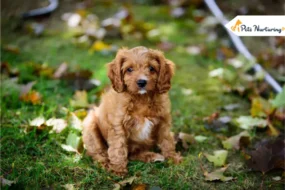
Beagles are some of the most popular breeds of companion dogs around the world and we are well aware of these long-eared cuties. But there’s a new variety of beagles that has recently become the talk of the town and it is commonly known by the name pocket beagle. Many also refer to them as mini beagles, miniature beagles, teacup beagles, and small beagles. They are a smaller, more compact version of the beagles we know of. They are a few inches shorter than a regular-sized beagle, the rest of the characteristics are just the same. Their tiny size doesn’t make them any less of a love bug.
Basic Overview Of Pocket Beagle
Pocket Beagle Dog Breed Overview
Breed Name : Pocket Beagle
Breed Group: Hound dog
Height: 7-12 inches
Weight: 7-15 lbs
Lifespan: 10-15 years
Coat: Short, dense, soft.
Color: Black and tan, red and white, tricolor, lemon, and white, pied, bluetick.
Temperament: Curious, affectionate, friendly, social.
Needs for Grooming: Low
Hypoallergenic: No
History and Origin

Pocket beagles accompanied nobles on their hunting trips in packs dating back to the 13th century. During that time they became known as ‘Glove Beagles’ as their tiny size allowed them to fit in hunting gloves. They were also known as the ‘Singing Beagles’. They were later replaced by the regular-sized beagles we commonly see today.
These dogs first came under the spotlight in the 15th century, when Queen Elizabeth was known to carry miniature beagles in her saddle pocket. From that, they also got their name as Queen Elizabeth pocket beagle.
The origin of pocket beagles is uncertain although we surely know that the regular-sized beagles we see today didn’t come into existence until the 19th century.
Beagles are known to have their name derived from the French word begueule meaning open throat, or old English word beag meaning small or as some believe it originates from the French word beugler meaning to bellow, or the German word beagle, meaning to scold.
The AKC doesn’t recognize the pocket beagle as an independent breed type but they can be registered as a smaller version of the standard beagle.
Pocket Beagle Size

Pocket beagle size is two to three inches smaller than the standard beagle. Pocket beagle size ranges from 7 to 12 inches tall and they weigh between 7 to 15 lbs.
The size of your small beagle or mini beagle dog will increase and reach its maximum in 12 months of their age. When your pocket beagle puppies are around 3 months of age, they weigh between 3 to 6 pounds, as they grow older to 6 to 9 months of age, they’ll weigh around 10 to 13 lbs and by the age of 12 months, your puppy will weigh 15 lbs or more.
If the pocket beagle size is more than 13 inches in height, it would be considered the standard beagle.
Is teacup beagle another smaller variety of the beagle?
No, many times the pocket beagle is also referred to as the teacup beagle, even though a pocket beagle isn’t a teacup-sized dog.
Temperament

Pocket beagles are happy little dogs, known to spread their infectious energy and joy. They are also known as ‘tail waggers’ due to this trait. These dogs love being social and the center of everyone’s attention.
Mini beagles are friendly, loyal, intelligent, and curious just like their larger counterparts. They are known to be of independent and aloof nature, often following their nose more than anything or anyone.
Since the beagles were used as scent hounds, their sense of smell is extremely strong and they tend to follow scents, this makes them a little stubborn and difficult to train.
The miniature beagles cannot be left alone for too long without a source of entertainment or engagement as the combination of boredom and separation anxiety can result in episodes of barking and destruction.
As they are hounds dogs, they have a prey drive and love to chase. Thus early socialization is a must if they are going to be around the smaller pets. To keep these dogs happy and thriving you should expose them to a lot of sights and smells.
Beagles are known to make three types of sounds which are barking, howling, and baying. Baying is a typical howl that the beagles make. The pocket beagles are not a happy breed and only bark when needed.
The mini beagles are funny dogs, often bringing a smile to their owner’s face with their antics and cuteness. Although they can be really difficult at times with their naughtiness and stubbornness.
These are great family dogs with lower energy drive than the regular beagle. They get along with children of all ages, senior citizens as well as pets.
Pocket Beagle Puppies

Pocket Beagle puppies or miniature beagle puppies are adorable little nuggets in size but can be heavy on your pockets. These designer puppies can be very expensive as they are rare.
There are between 2 to 14 miniature beagle puppies per litter. We always suggest adoption over buying a dog as it gives a second chance at life to the dogs that need a home. So look for pocket beagle puppies in your local shelter before you decide to buy from a breeder.
Pocket Beagle Care
The miniature beagles are scent hounds and they can wander off following a scent. Thus, they should always be kept on a leash and only left off-leash in fenced areas. These are small dogs and they must be kept indoors during the night.
They are known to attract thieves due to their high price, so make sure to get your pup microchipped.
Grooming

The mini beagle dog has a coat that is easy to maintain. Their short hairs need combing twice a week to remove loose hairs, mats, dirt and enhance the circulation to the skin. Bathe them only when needed. Once a month is good enough or only if they get dirty by rolling in mud, or worse, poo.
Brush their teeth daily or provide dental chews to avoid periodontal and gum disease caused by tartar buildup. Trim their nails every 6 to 8 weeks and regularly clean their ears and eyes.
Feeding

One cup of kibble should be enough for your mini beagle or you can refer to the instructions on the commercial food pack. If you plan on giving your beagle a home-cooked meal, please take your veterinarian’s advice on formulating a proper and balanced diet.
Avoid overfeeding them and providing them ad-lib food. Split their meals into smaller ones and give them multiple times instead of feeding them all at once.
Exercise and Training

Daily exercise is a must to keep these dogs fit and stimulated. They need 30 minutes of walking daily or an exercise session. They can join you on your jog to the park or swim with you in the pool.
They are intelligent dogs and can be easily trained if they want to. Their stubbornness is the common obstacle faced during training. They might understand what needs to be done but not want to do it.
The best way to train them is to make them want to do something by tricking them into thinking that it’s their idea. Positive reinforcement and rewarding good behavior can make matters simpler. Climbing or other vigorous exercises must be avoided until they are 18 months old because up to that age their joints are still in the developmental stage.
FUN FACT
“Their ears help their noses”
According to the breed standard, Beagles’ ears, when drawn out, reach the end of their nose. Those long ears actually catch scent particles and keep them close to the dog’s nose, so he can take in as much information as possible.
Pocket Beagle Price
Pocket beagle price ranges from 500$ to 1500$ depending on the location, demand, pedigree, quality of breeding, and other factors.
Common Health Concerns in Pocket Beagles
Miniature beagles or teacup beagles are affected with various medical ailments just like most teacup breeds. Most of the health concerns arise from poor breeding, breeding between dogs with pre-existing conditions, improper care during pregnancy, under-nourishment, etc.
Pocket beagles also have a big appetite which makes them prone to obesity which is the root of several health issues. Health conditions commonly occurring in beagles are as follows:
- Intervertebral disc disease
- Congenital heart diseases
- Eye disorders like cherry eye, cataract, glaucoma, retinal dysplasia, and KCT
- Epilepsy
- Hypothyroidism
- Beagle dwarfism
- Funny puppy syndrome
- Chinese beagle syndrome
- Cryptorchidism
- Cleft palate or harelip
- Canine hip dysplasia
- Epiphyseal dysplasia
- Patellar luxation
- Dermatitis
Final Words
The mini beagles are perfect family dogs and need low maintenance concerning care and grooming. They can be taken care of by novice owners as they are easy-going dogs, who are social.
The only thing you have to keep in mind before getting a beagle is that, as intelligent dogs, they easily get bored and boredom means yapping and destruction. So only get a beagle if you can actively engage with your dog and not leave them on their own for a long time.
Also, a smaller size doesn’t mean lesser exercise for these mutts. They need an active family with a minimum of 30 mins of exercise daily. They are 25% smaller than the standard-sized beagles but that doesn’t affect any other aspect.
So if you think you can fulfill all their requirements and keep this tiny dog happy, go for it because they’ll make you happy too.
Continue reading:











